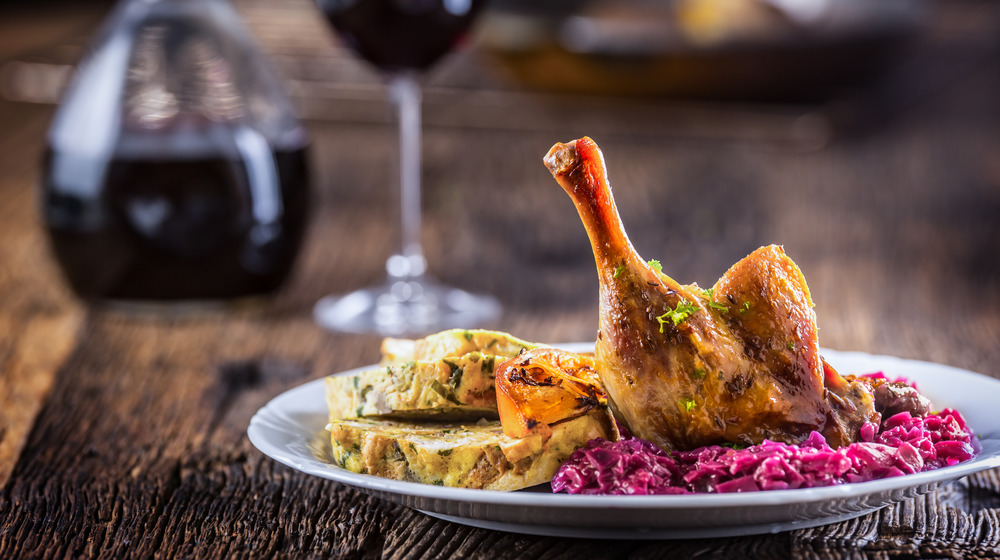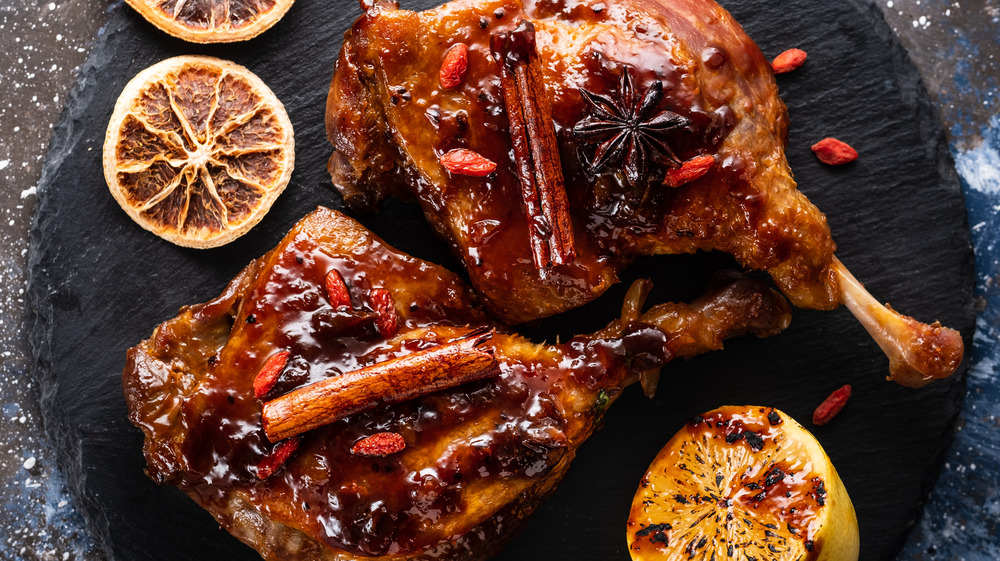Here's Everything You Need To Know About Confit
When you think of confit — say, duck confit (via Simply Recipes) – you probably think of a warm, savory, meaty dish that satisfyingly melts in your mouth and bursts with flavor. Confit is a cooking method that has withstood the test of time, even in the contemporary culinary world.
Confit (pronounced kone-FEE) comes from the French word confire, which means "to preserve." Perhaps the term itself may sound exotic and intimidating, but this classic cooking method is quite simple once perfected. The most basic definition (per Merriam-Webster) of confit is to preserve meats, particularly poultry, by slowly cooking and storing them in their own fat.
How did this fascinating method come about? James Beard Award-winning chef and restaurateur Thomas Keller teaches a MasterClass course on this culinary topic. As part of his instruction, he explains the history behind the technique: "Hunters and cooks dating back to the fifteenth century made an early confit by heavily salting the legs and wings of birds before submerging them in fat and storing them in a cool, dark place to ripen for months." Before efficient modern refrigeration was invented, confit was a primary preservation method for duck and goose meat, which were deemed staple proteins. As time passed, the technique transformed into a well-established food preparation practice around the globe.
What makes confit unique from other cooking and preservation methods?
Confit requires plenty of salt, fat, and time. According to The Spruce Eats, confit is a tried and true meat preservation method, since the fat barrier restricts oxygen from penetrating the meat, thereby preventing bacteria growth and quick spoilage and also increasing shelf life. (Yay, science!)
Well, what about deep frying? That also involves cooking in fat, right? Yes, but there are a few important differences between the deep fry and confit methods that you should know. According to Serious Eats, confit preparations are done at an oil temperature of around 200 degrees Fahrenheit or cooler. Deep frying, another popular fat-oriented cooking method, requires much hotter temperatures — between 325 and 450 degrees Fahrenheit. Deep fried foods are cooked for short periods of time at extremely high temperatures and, as a result, typically have crisp and crunchy outer surfaces with hot and gooey insides. This occurs via dehydration.
However, traditional confit takes a lot more time and a lot less heat. Cool fat is poured over the meat, then placed in an oven. While cooking, the wax-like fat breaks down connective tissues like tendons and ligaments in the meat. The result is ultra-tender, silky meat with no loss in moisture or flavor. And when sealed and stored properly, confit can last for several months, according to Science of Cooking. And Food Republic suggests using the leftover fat for frying eggs and making popcorn.
As the old saying goes, "Slow and steady wins the race."

